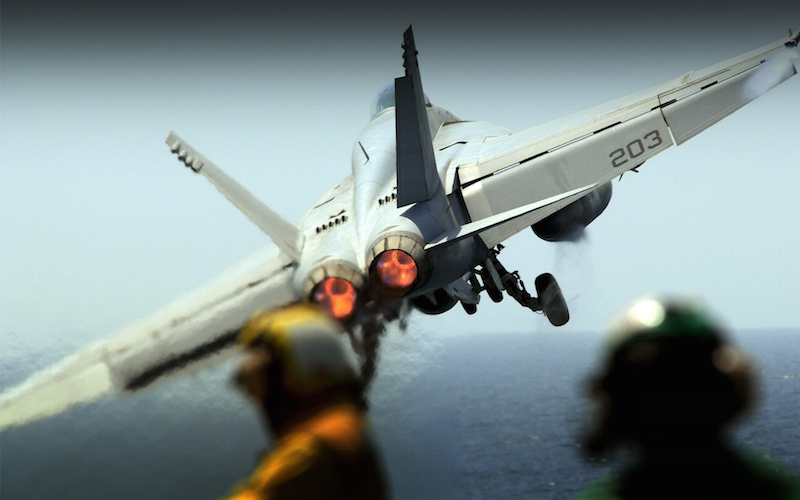
India’s Hooked on American Military Toys
India’s leading English language daily, Times of India, reported recently that the United States has emerged as India’s biggest arms supplier in the last four years. It has overtaken Israel and Russia. For any India observer, this news is significant given India’s traditionally strong defense links with states other than America. India is one of the major arms importers of the world and imports about 70% of its arms requirements. India’s arms imports include a variety of defense equipment such as fighter jets, artillery guns and naval warships. It sources defense equipment from suppliers like Israel, France, Sweden and Britain among others. Given India’s colonial history, Britain was India’s major arms supplier in the immediate years after its independence. In the Cold War years, Soviet Russia emerged as another major weapons supplier. To this list, Israel, France and Sweden were added in the last three decades.
In the years since the end of Cold war, the US has emerged as a major arms supplier to India. India’s strengthening of defense ties with the US is not just limited to the sale of advanced weaponry in maritime and air domains. Armed forces of both countries regularly hold numerous joint exercises. They are part of trilateral naval exercises with Japan and other multilateral exercises as well. Their defense establishments are in regular touch with each other by holding regular meetings of several bureaucratic groups related to defense cooperation and policy. This process of growing India-US defense ties cannot be separated from the larger context of the deepening of the India-US relations in cultural, economic and political fields in the last two decades.
In spite of having significant political differences over policies regarding Afghanistan and Pakistan, India and the US have common stakes in the security of the Asia-pacific region. The biggest factor pushing both these countries closer is the rise of China and changing geopolitical configurations in the Asia Pacific region as a result. America has announced its intent to play a greater role in the emerging geopolitics of this region by its ‘pivot to Asia’ strategy. India is also engaged with states of the region and is firming up its ties with Vietnam, Singapore and Japan.
India and the US share concerns regarding aggressive Chinese behavior and its attempts to dominate the region. The importance of developments in this region to the India-US bilateral relationship can be assessed by the fact that last year both countries issued a joint strategic vision for the Indian Ocean and the Asia Pacific region.
Keeping the emerging strategic landscape in mind, India and the US have seen an exponential rise in their defense co-operation in the last decade or so. Both countries were involved in the Tsunami relief operations in South East Asia in 2004. Subsequently, India signed a ten year defense framework cooperation agreement with the US in 2005. It was followed by the historic civil nuclear deal and unprecedented NSG waiver for India in 2008. The defense framework agreement of 2005 was renewed last year for another ten years. In addition to that, recently there was a move to make India America’s major non NATO defense partner. Legislation was also introduced to that effect in the US Congress.
There have been numerous visits from both sides. The US defense secretary has visited India thrice last year. There are other officials like US Pacific Command chief or state department officials who are regularly paying visits to New Delhi for consultations on political and security related issues. The recent visit to the US by India’s Prime Minister was his fourth in two years. The Indian defense minister was also in the US last year and has met his US counterpart on the sidelines of other multilateral security forums. These visits demonstrate the willingness of both sides to strengthen the relationship. Both these countries are now considering joint weapons development and transfer of technology. These proposals would be mutually beneficial. India will be particularly keen to get American defense technologies. It has emphasized transfer of technology with its other major defense partners like Russia and Israel. How, if at all, India persuades Americans to transfer technology will be interesting to watch.
Along with the working groups and visits of policymakers, India has steadily increased imports of US weapons since 2005-06. India’s shopping list from the US in the last decade is quite impressive. India has purchased Twelve C-130 J Super Hercules aircraft so far. It has also purchased eight maritime patrol aircraft in 2009 and is now in the process of placing orders for four more such aircraft. This will help India enhance its capabilities of maritime surveillance. India also bought ten C-17 Globe master strategic airlift aircraft in 2011. These heavy airlift aircraft increase the reach of the armed forces and enable them to operate in areas far away from the mainland. In addition to that, India has also decided to buy 145 ultralight howitzers from the US. Last year, it purchased 22 Apache helicopters and 15 Chinook heavy lift aircraft.
All of these weapons purchases have totaled about 14 billion dollars. These weapons systems are playing a major role in the modernization of the Indian armed forces as well as in deepening the bilateral relationship with the US. India has also signed logistics support agreement with the US and is discussing two other agreements regarding communications and information sharing. Eventual signing of these three agreements will enhance the interoperability of the armed forces of the two nations. Even though, these agreements are technical in nature, the decision to sign them is more political. There have been some voices in the Indian strategic community opposing signing of these agreements as it will put India firmly in the US camp. Some Indian strategists are also worried that it will have a negative influence on Indian strategic autonomy and its relationship with China. Whether these doubts are valid or not is a question of one’s perspective. Right now, the Indian establishment seems more or less in favor of drawing itself closer to the US. How India further strengthens its emerging defense co-operation with America while balancing its robust trade links with China and already existing defense ties with Russia will test Indian diplomacy in the coming years.

